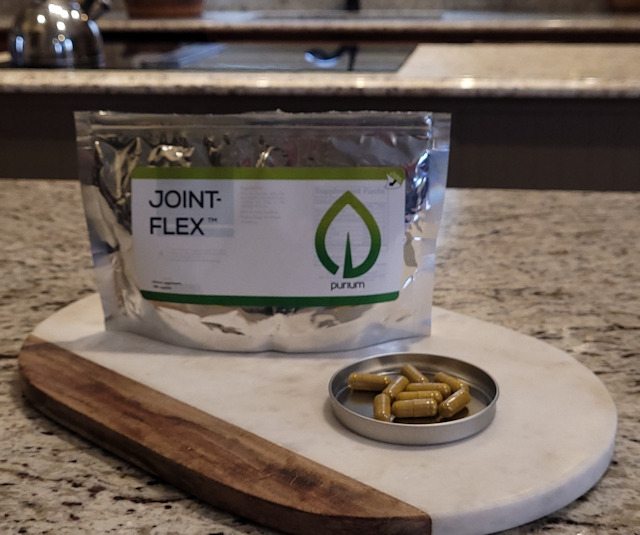Introduction to Hip Flexibility
The Importance of Hip Mobility
Hip mobility is a cornerstone of overall health and physical fitness. As the foundation of the body’s movement, the hips’ ability to function properly affects everything from posture to joint health. Limited hip mobility can lead to compensatory movements in other body parts, causing undue stress and potential injury. Therefore, incorporating hip-mobility exercises is essential for maintaining a balanced and functional body.
Common Causes of Tight Hips
Tight hips can result from a variety of factors, including sedentary lifestyles and imbalances in muscle strength. Prolonged sitting or standing, carrying loads unevenly, and neglecting proper warm-up and cool-down routines can all contribute to hip tightness. Additionally, an imbalance between overactive and underactive muscles in the hip region can lead to reduced mobility, with some muscles becoming weak and lengthened while others become shortened and tight.
Benefits of Improving Hip Flexibility
- Decreased body pain: Stretching the hip muscles can alleviate tension, reducing pain in daily activities and during exercise.
- Improved posture: Flexibility training can correct muscle imbalances, leading to better alignment and posture.
- Reduced risk of injury: Flexible muscles can better handle stress, decreasing the likelihood of injuries.
- Enhanced athletic performance: Good hip flexibility allows for a greater range of motion, positively impacting sports and physical activities.
Understanding the Hip Flexor Muscles
The hip flexor muscles, including the psoas, iliacus, and rectus femoris, play a pivotal role in hip mobility. These muscles work together to allow for a range of movements, from walking to running. When hip flexors are tight or imbalanced, it can lead to issues such as lower back pain and reduced mobility. Strengthening not only the primary muscles like the gluteus maximus but also the smaller stabilizers such as the gluteus medius and tensor fascia lata is crucial for improving hip flexibility.
In conclusion, hip flexibility is vital for a fluid and healthy lifestyle. By understanding the causes of tight hips and the benefits of improving flexibility, as well as the key muscles involved, individuals can take proactive steps towards unlocking their hip mobility. Consistency in stretching and strengthening routines will lead to noticeable improvements, paving the way for a more active and pain-free life.
Assessing Your Hip Flexibility
Simple Tests for Hip Mobility
To begin understanding your hip flexibility, it’s essential to perform some simple tests that can be done at home. These tests will give you a baseline of your current hip mobility and highlight areas that may need improvement.
- Thomas Test: Lie on your back at the edge of a table or a high bed, with your legs hanging off. Bring one knee to your chest and hold it there. If the thigh of the hanging leg is not parallel to the ground or if the knee is bent more than 90 degrees, it may indicate tight hip flexors.
- Knee to Chest: While lying on your back, pull one knee towards your chest to see how close you can get it. If you can’t pull it close without the other leg lifting off the ground, your hip mobility may be limited.
- Butterfly Stretch: Sit with the soles of your feet together and let your knees drop to the sides. The closer your heels are to your body and the lower your knees go, the better your hip flexibility. Difficulty in performing this stretch could suggest tightness in the hip adductors.
- Squat Test: Perform a basic squat. If you can squat with your feet flat on the floor and your thighs parallel to the ground without discomfort, your hips are likely quite flexible. Difficulty maintaining this position may indicate tightness in the hip flexors, extensors, or both.
These tests are not exhaustive but offer a starting point to assess hip mobility. If you find any of these movements challenging or painful, it may be time to focus on improving your hip flexibility.
When to Seek Professional Advice
While self-assessment is a valuable tool, there are times when professional advice is necessary. If you experience any of the following, consider consulting a physical therapist or healthcare provider:
- Persistent Pain: If you experience ongoing pain in the hips, lower back, or legs that doesn’t improve with rest or over-the-counter pain relief.
- Limited Range of Motion: If your hip mobility is significantly restricted and interferes with daily activities or athletic performance.
- Post-Injury Assessment: If you’ve recently sustained an injury to the hip area, a professional can help determine the extent of the injury and the best course of action for recovery.
- Unexplained Symptoms: If you have symptoms such as joint stiffness, clicking or popping sounds during movement, or reduced strength that cannot be explained by simple tightness.
Professionals like sports fitness physical therapists can provide personalized training plans and one-on-one sessions to help you achieve more fluid body movement. They can assess your individual needs, create a tailored plan that addresses specific areas for improvement, and teach you how to incorporate stretches and exercises into your routine for maximum benefit.
Remember, the goal of assessing hip flexibility is not just to identify limitations but to create a foundation for a more fluid and pain-free lifestyle. Regular assessment and appropriate action can lead to significant improvements in mobility and overall well-being.
Fundamental Hip Stretches
Static Stretches for Beginners
Starting with static stretches can be an effective way to begin improving hip flexibility, especially for beginners. These stretches involve holding a position for a period of time, allowing the muscles to gradually relax and lengthen. Here are a few beginner-friendly static stretches:
- Seated Butterfly Stretch: Sit with the soles of your feet together and gently press your knees towards the ground to stretch the inner thighs and hips.
- Pigeon Pose: From a seated position, extend one leg behind you while bending the other in front of you, creating a stretch in the outer hip of the bent leg.
- Supine Hip Flexor Stretch: Lie on your back and pull one knee towards your chest, keeping the other leg straight, to target the hip flexors.
Hold each stretch for 20-30 seconds, breathing deeply to help deepen the stretch. Remember to perform these stretches on both sides to maintain balance in hip flexibility.
Dynamic Movements for Hip Flexibility
Dynamic movements are stretches that involve motion and are particularly beneficial for warming up the hips before activity. These movements help increase blood flow, lubricate the joints, and prepare the muscles for exercise. Examples include:
- Leg Swings: Hold onto a stable surface and swing one leg forward and backward, then side to side, to mobilize the hip joint.
- Hip Circles: Stand with feet hip-width apart and make large circles with your hips, first in one direction, then the other.
- Walking Lunges: Step forward into a lunge position, lowering your hips towards the ground, then step forward with the other leg and repeat.
Perform 10-15 repetitions of each dynamic movement, ensuring you maintain good posture and control throughout the exercises.
Breathing Techniques During Stretching
Proper breathing is a crucial component of effective stretching. It helps to relax the body, reduce tension, and can even enhance the stretch. When stretching, focus on taking slow, deep breaths. Inhale deeply through the nose, allowing your abdomen to expand, and exhale slowly through the mouth. As you exhale, try to release any tension in the muscles you’re stretching. This mindful breathing can help you achieve a deeper stretch and promote relaxation.
By incorporating these fundamental hip stretches into your routine, you can work towards a more fluid lifestyle with improved mobility and reduced discomfort. Remember to listen to your body, never force a stretch, and gradually progress in intensity and duration as your flexibility improves.
Advanced Hip Opening Techniques
Progressive Overload in Flexibility Training
Just as with strength training, the principle of progressive overload can be applied to flexibility training to achieve greater hip mobility. This involves gradually increasing the intensity or duration of stretches over time. To safely implement progressive overload, start with a comfortable stretch and hold it for a set period, then gradually increase the hold time or deepen the stretch in subsequent sessions. It’s essential to listen to your body and avoid pushing into pain, as this can lead to injury.
Incorporating Equipment in Hip Stretches
Using equipment can enhance hip flexibility exercises by providing support, increasing resistance, or helping to maintain proper alignment. Tools such as resistance bands, foam rollers, and exercise balls can be particularly effective. For instance, a resistance band can help maintain leg alignment during a lying hip stretch, while a foam roller can be used to release tension in the hip flexors and surrounding muscles. An exercise ball can offer support during deeper stretches or assist in dynamic movements that target hip mobility.
Yoga Poses for Hip Flexibility
Yoga is renowned for its hip-opening poses that can significantly improve flexibility and joint mobility. Here are a few poses to incorporate into your routine:
- Pigeon Pose (Eka Pada Rajakapotasana): This deep stretch targets the hip flexors, glutes, and piriformis, aiding in the relief of tightness and tension.
- Frog Pose (Mandukasana): By opening the inner thighs, hips, and groin, this pose can help improve flexibility and prepare the body for deeper hip-opening exercises.
- Lizard Pose (Utthan Pristhasana): This pose stretches the hip flexors, hamstrings, and quadriceps, promoting overall hip mobility.
- Garland Pose (Malasana): A deep squat that opens the hips and groin while stretching the lower back and ankles.
When practicing these poses, focus on maintaining a steady breath and holding each position for several breaths to allow the muscles to relax and stretch. As you progress, you can hold the poses for longer periods or explore variations to deepen the stretch.
By incorporating these advanced techniques into your hip flexibility routine, you can work towards achieving a fluid range of motion that supports a healthy and active lifestyle. Remember to approach each session with patience and mindfulness, gradually building up to more advanced stretches and poses as your flexibility improves.
Integrating Hip Flexibility into Daily Life
Stretches for the Office and Home
For those spending long hours at a desk, incorporating hip stretches into your daily routine can combat the stiffness and discomfort associated with sedentary lifestyles. Simple stretches such as seated figure-four stretches, where you cross one ankle over the opposite knee and gently lean forward, can be done without leaving your chair. Standing hip flexor stretches, performed by stepping one foot back and gently pushing the hips forward, can be integrated into short breaks throughout the day. Additionally, utilizing the edge of a desk or chair to perform standing hamstring stretches can improve flexibility and circulation.
Hip Mobility Routines for Athletes
Athletes require dynamic hip mobility to perform at their best. Incorporating movements such as leg swings, both forward and side-to-side, can prepare the hips for a wide range of activities. Lateral lunges not only stretch the hip adductors but also engage the muscles needed for side-to-side movements prevalent in sports. Athletes should also focus on deep lunge variations with a twist to target the hip flexors while engaging the core, promoting both flexibility and stability.
Maintaining Hip Flexibility with Age
As we age, maintaining hip flexibility becomes crucial for preserving balance and mobility. Gentle yoga poses such as the “Happy Baby” or “Pigeon Pose” can be particularly beneficial for older adults. Incorporating these stretches into a daily routine can help maintain joint health and reduce the risk of falls. It’s important to focus on gentle, controlled movements and to avoid overstretching. Emphasizing the importance of consistency, older adults should aim for a daily practice, even if it’s for a short duration.
Common Mistakes and How to Avoid Them
One of the most common mistakes when working on hip flexibility is overstretching, which can lead to injury. It’s essential to stretch to the point of mild discomfort, not pain. Consistency is also key; sporadic stretching is less effective than a regular routine. Additionally, listening to your body’s signals is crucial. If a stretch causes pain or discomfort, it’s important to back off and possibly seek professional advice.
Embracing a Fluid Lifestyle
Integrating hip flexibility exercises into daily life is essential for a fluid lifestyle. Whether you’re at the office, at home, or an athlete in training, there are stretches and routines that can be tailored to your environment and needs. By avoiding common mistakes and focusing on consistency, you can maintain and improve your hip flexibility, contributing to overall health and well-being. Remember, the journey to improved flexibility is a gradual process that requires patience and persistence.
Common Mistakes and How to Avoid Them
Overstretching and Its Risks
When it comes to improving hip flexibility, enthusiasm can sometimes lead to overstretching, which poses significant risks. Overstretching can result in muscle strains, ligament sprains, and even long-term damage to your joints. To avoid these pitfalls, always warm up before stretching and never push your body beyond a comfortable range of motion. It’s crucial to recognize the difference between a beneficial stretch and one that causes sharp pain. A good rule of thumb is to hold stretches for 20-30 seconds, allowing the muscles to gradually adapt without causing harm.
The Role of Consistency and Patience
Improving hip flexibility is not an overnight process; it requires consistency and patience. Significant improvements can be seen over weeks and months, not days. Incorporate hip stretches and mobility exercises into your daily routine, but do so with gradual progression. Avoid the temptation to rush the process by doing too much too soon, as this can lead to setbacks. Consistency in your routine will yield better results than sporadic, intense sessions.
Listening to Your Body’s Signals
Your body is an excellent communicator, and it’s essential to listen to the signals it sends. Discomfort during stretching is normal, but sharp pain is a clear indication that you need to stop and reassess. If you experience persistent pain or discomfort, it may be time to seek professional advice. Remember that flexibility training isn’t just about the muscles; it’s also about the nervous system. Breathing techniques can help you relax into a stretch, allowing your body to open up more naturally and safely. Pay attention to how your body feels during and after exercises, and adjust your routine accordingly.
In conclusion, to unlock hip flexibility and embrace a fluid lifestyle, avoid overstretching, be consistent and patient with your practice, and always listen to your body’s signals. By doing so, you’ll minimize the risk of injury and maximize the benefits of your flexibility training.
Conclusion: Embracing a Fluid Lifestyle
Summarizing Key Takeaways
Throughout this article, we’ve explored the critical importance of hip flexibility and the various stretches and techniques that can enhance it. We’ve learned that hip flexibility is not just about preventing injuries or improving athletic performance; it’s about enriching our daily lives with ease of movement and reducing the strain on our bodies. From the static stretches ideal for beginners to the dynamic movements that cater to a more active lifestyle, and the integration of breathing techniques, each aspect plays a vital role in achieving a fluid lifestyle.
Encouragement for Continued Practice
As we’ve seen, the journey to unlocking hip flexibility is ongoing. It requires consistency, patience, and a willingness to listen to your body. Whether you’re an office worker, a seasoned athlete, or someone looking to maintain flexibility with age, the benefits of regular hip stretching are undeniable. I encourage you to make these stretches a part of your daily routine, to approach them with mindfulness, and to celebrate the small victories along the way. Remember, flexibility training is a form of self-care that pays dividends in all areas of life.
Additional Resources for Further Learning
If you’re looking to deepen your understanding and practice, there are numerous resources available. Consider exploring yoga classes, Pilates sessions, or flexibility workshops that focus on hip mobility. Books, online courses, and instructional videos can also provide guidance and inspiration. For personalized advice, don’t hesitate to consult with physical therapists, personal trainers, or yoga instructors who specialize in hip flexibility. They can offer tailored programs and modifications to suit your individual needs.
In conclusion, embracing a fluid lifestyle through improved hip flexibility is a transformative process that enhances your overall well-being. It’s about moving through life with grace, strength, and confidence. So, take the knowledge you’ve gained, apply the stretches that resonate with you, and step into a more fluid, vibrant version of yourself.
Sources:
https://squatuniversity.com/2015/12/01/the-squat-fix-hip-mobility-pt-1/
https://www.womenshealthmag.com/fitness/a60720121/progressive-overload-training/?utm_source=google&utm_medium=cpc&utm_campaign=mgu_ga_whm_md_dsa_hybd_mix_us_20569044902&gad_source=1&gclid=Cj0KCQjwlIG2BhC4ARIsADBgpVTMWXC8BWahLjaCnDkSMC4G7RMB6jGLF2_EUCmtnv04ZNL1GbVoivsaAnkPEALw_wcB
https://wellself.com/hamstring-injury-signs-symptoms-treatment/
https://my.clevelandclinic.org/health/articles/24625-physical-therapist









